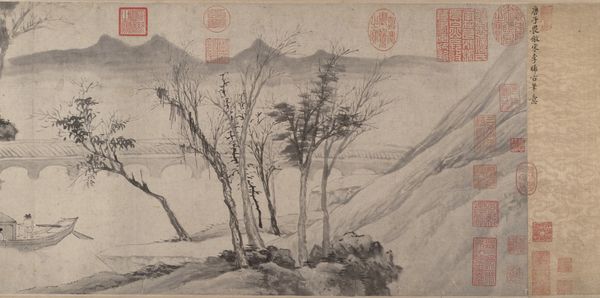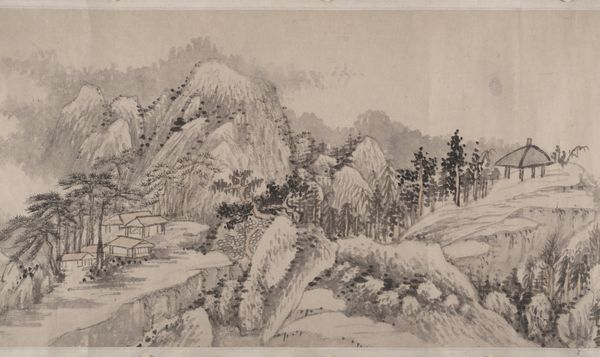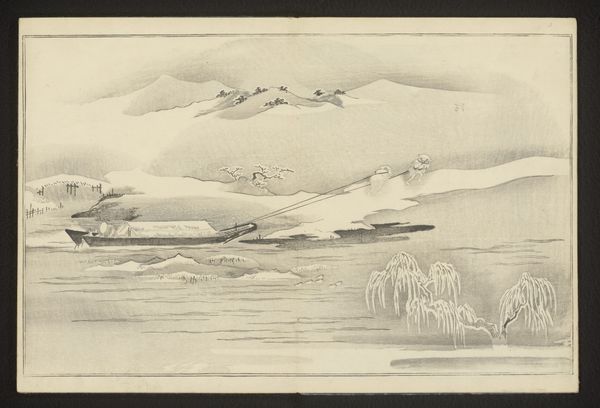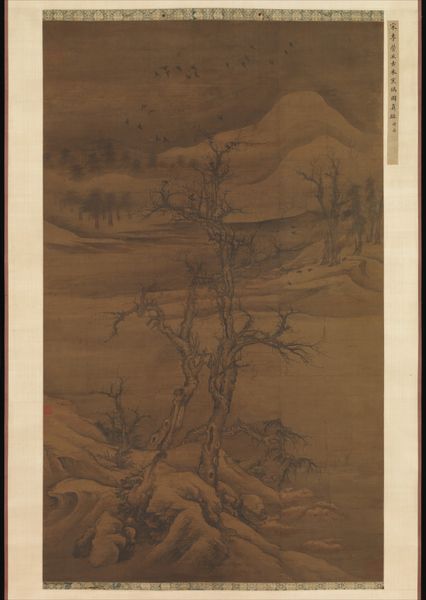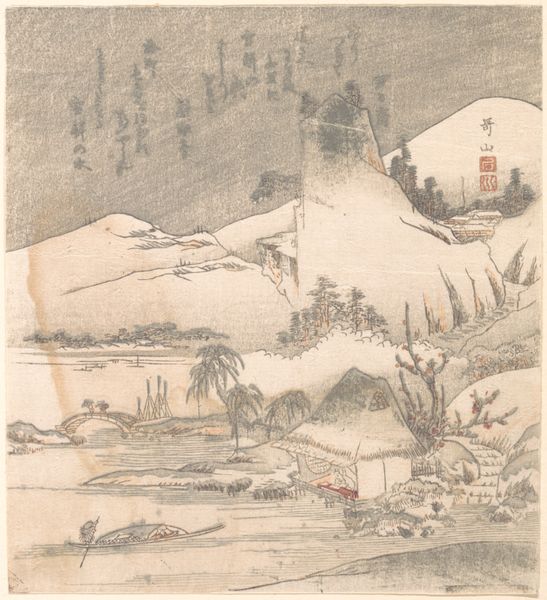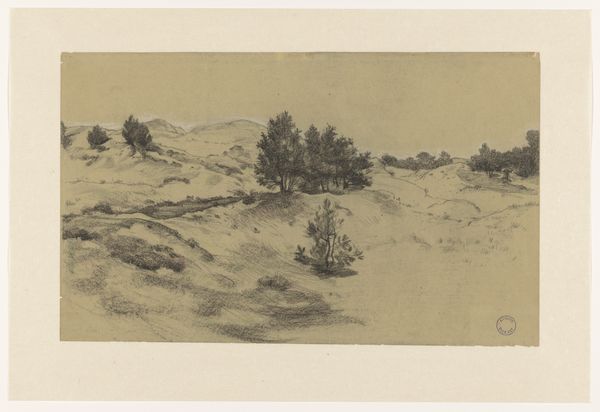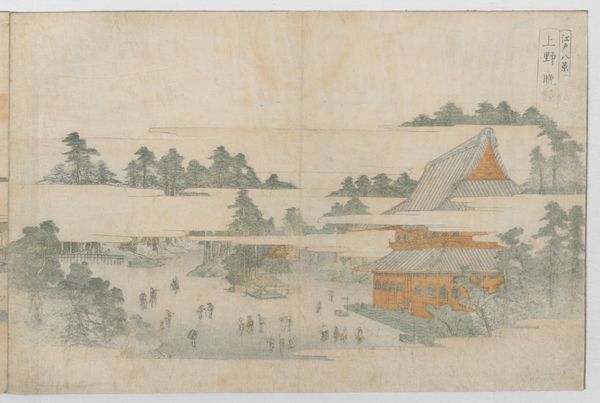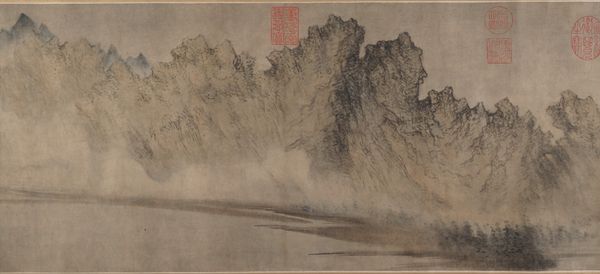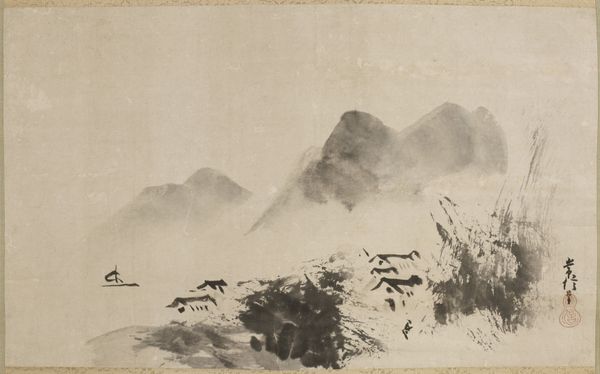
Snowy landscape with rustic riverside retreat 1175 - 1199
0:00
0:00
tempera, painting, ink
#
byzantine-art
#
medieval
#
tempera
#
painting
#
asian-art
#
landscape
#
river
#
ink
#
20_southern-song-dynasty-1127-1279
#
northern-renaissance
Dimensions: Image: 16 3/8 in. × 95 in. (41.6 × 241.3 cm) Overall with mounting: 16 3/8 in. × 42 ft. 11 5/16 in. (41.6 × 1308.9 cm)
Copyright: Public Domain
Curator: Looking at this snowy landscape, there is an immediate feeling of serenity, though tinged with a slight melancholy. Editor: I agree, a profound sense of stillness permeates Liu Songnian's "Snowy Landscape with Rustic Riverside Retreat." Painted during the Southern Song Dynasty, sometime between 1175 and 1199, this work in ink and tempera, captures the essence of literati painting, so popular at the time. It's a quiet meditation, really. Curator: The symbolism inherent in these landscapes always fascinates me. The bare trees against the snow, for instance. They speak to resilience in the face of adversity. What sort of emotions did landscapes like this typically invoke during this period? Editor: Such art spoke volumes. With the loss of the North and relocation of the capital, court artists produced deliberately simple landscape imagery evoking the solace and detachment prized by Confucian and Daoist philosophy, promoting societal harmony under loss. Note that figure nestled inside that rustic dwelling--there's a real implication about retreating into the inner self in the face of chaotic external events. Curator: Yes, I see the subtle invitation to embrace inner peace but is it perhaps, more broadly, the symbolic portrayal of intellectual escape—a refuge from the turbulence of public life? Editor: It absolutely speaks to the deep historical anxieties present in the court—yet painted for public viewership it served a propaganda role, offering images of resolution through retreating into study and away from political strife, creating idealogical continuity between Neo-Confucian statecraft and Daoist-Zen aesthetic sensibility. It highlights the political stakes in promoting escapism in that context! Curator: It is intriguing how something that appears so tranquil could carry such historical weight. It suggests cultural memories linger and repeat themselves, revealing persistent longings for harmony. Editor: Exactly. And even today, separated by centuries, we see reflected echoes of the socio-political stakes embedded into the aesthetic sensibilities here, confirming art's continuous and crucial place in societal life.
Comments
No comments
Be the first to comment and join the conversation on the ultimate creative platform.
